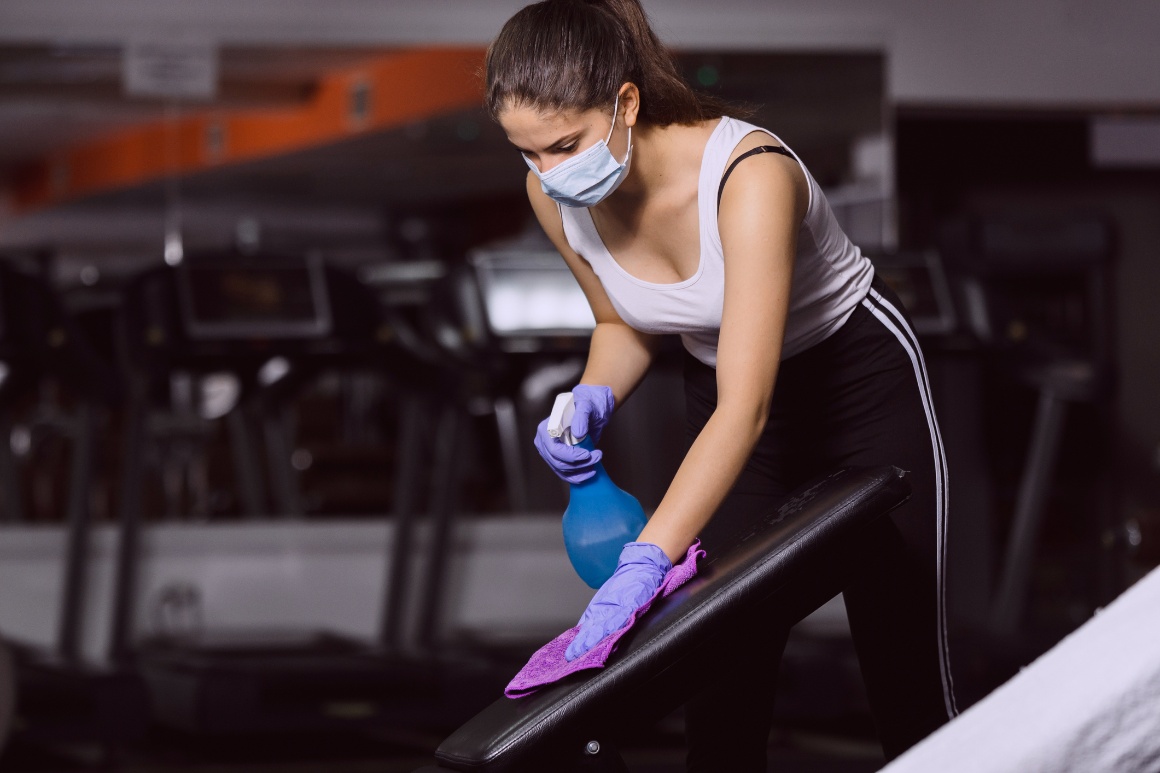
School is back in session, and for many universities, team sports are also on the agenda. Individuals are starting to return to normal routines, which often means hitting the gym or attending a fitness class. Weight rooms and fitness facilities with shared equipment have always taken precautions to protect those who use them, but in the midst of an ongoing global pandemic, extra disinfection measures (using effective cleaning solutions) are being taken to reduce the risk of spreading coronavirus.
Tips for Disinfecting Weight Rooms and Fitness Facilities
Most fitness enthusiasts and athletes are used to wiping down equipment before and after use to reduce the spread of germs through sweat and exhaled particles. Fitness facilities and school gyms now have even more responsibility to keep patrons and students safe through disinfection, education, and documentation.
Facility Disinfection
Because fitness facility managers are already familiar with disinfection protocols, moving to a more rigorous standard should not be a huge leap. The cleaning and disinfection process should include:
-
- Washing hands before and after cleaning and disinfection
- Wearing gloves and masks during cleaning and disinfection
- Wiping in the same direction if using wipes or wiping after spraying
- Following the recommended contact times to ensure the product is on the surface long enough to be effective
- If rinsing is required, doing it within the recommended time so the product does not dry
Educate Employees and Students or Customers
Facility managers are not the only people who must be involved in preventing the spread of viruses and bacteria. All employees and gym-goers should also be aware of their responsibilities, which include:
-
- Covering equipment with a towel during use to minimize transfer of contaminants
- Disinfecting all portable equipment (free weights, mats, and so on) between each use
- Properly using PPE (masks and gloves) while cleaning and disinfecting
- Applying cleaners and disinfectants using the correct methods
- Washing hands before and after working out
Hold periodic training sessions for employees and use signage throughout the facility to remind users of their roles in keeping the gym safe.
Documentation
Without documentation that shows what has been completed, it’s easy to assume that someone else has already disinfected an area. This type of confusion can be avoided by:
-
- Creating a daily cleaning schedule and associated checklists
- Maintaining a log of who completed each task and when it was last done
Documentation helps keep everyone accountable and ensures that the established disinfection protocols are followed.
LSU Takes Proactive Approach with D7
In addition to athletes training in small teams to help minimize the risk of spreading to a larger group, the weight room at LSU is disinfected multiple times a day with D7. The liquid formulation is applied with HVLP paint sprayers to cover all equipment surfaces with a fine mist.
D7 is applied before every time a new group comes into the facility, and the entire process takes only 10 minutes. At the end of the day, a 30-minute deep clean ensures that all surfaces are treated. The goal of the program is to prevent the spread of infection between players through cross-contamination on fitness equipment.
D7 and Coronavirus
D7 is being used in a broad range of applications to help prevent the spread of coronavirus. Food processing plants that have been using D7 in production areas now use it in break rooms and offices. Public buildings, schools, hospitals, restaurants, and many other types of businesses are now using D7 to disinfect surfaces throughout the day. If you’d like to learn more about using D7 in your facility, check out our Product Overview Guide today.

